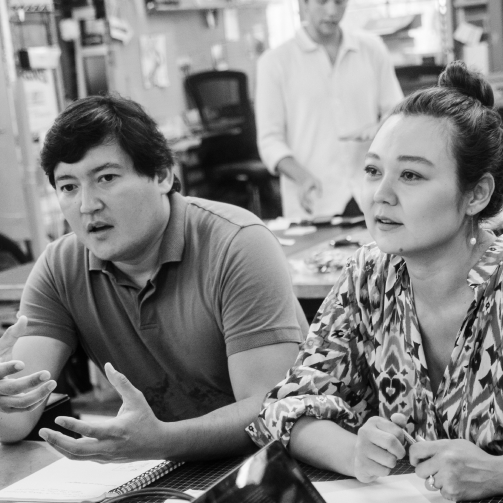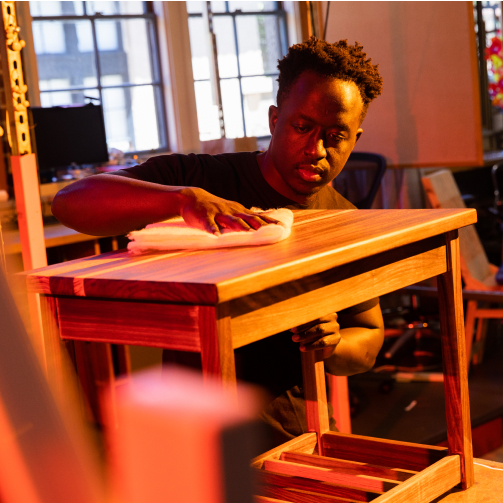What would you learn?
Program InfoThe ability to prototype and make across all mediums, existing and emerging.
Understand the landscape of design work. Build physical products, code, write policy, and work with emerging technologies.
The care and responsibility to be leading stewards of the planet, all people, and the data we generate.
Know how to work slow and fast. Understand how to learn from and with other humans. Realize the importance of equity, ethics and implications. Set visions and the paths to them. Prioritize people and the planet over profit.
The quirky creativity that produces new-to-the-world ideas.
See trends, spot new opportunities, and have the courage to boldly try something untested. Leverage interdisciplinary exposure and ambiguity.
The flexibility of adaptive learning.
Able to navigate ambiguous projects and processes with appropriate methods; integrate learning from a wide range of life experiences to develop habits and mindsets that foster lifelong learning.
Curriculum:
Stanford MS Design encompasses courses across three focus areas:

Design Core
Foundation courses to develop a well-rounded designer:
+ Project-Based Design Work
+ Human Factors
+ Design Ethics
+ Leadership
+ Visualization
Methods Focus Area
Design can only achieve meaningful impact when it is expressed in the world. Each of the three methods focus areas enables students to effectively implement their design abilities. They allow students to have methods for analysis, describing phenomena, and design problem application.
These focus areas are central to a student’s professional marketability. Students select one of the following methods focus areas.
+ Physical Form + Manufacturing
+ Emerging Technologies + Digital User Experience
+ Human Behavior + Multi-stakeholder Research


Domain Focus Area
Students will select a domain focus area to gain added knowledge in a field of interest to them. Students will work with their advisor to define a rigorous domain focus area and select the appropriate courses. This domain depth provides a rich context for the MS capstone project.
FAQs
For additional university-specific grad admissions inquiries, please visit the Stanford Graduate Admissions FAQ page here.
